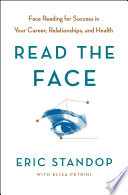

Reading faces is closely linked to emotional intelligence (EQ). The book outlines how enhancing one's ability to read facial expressions contributes to greater self-awareness, self-regulation, and social skills. The author argues that emotional intelligence is crucial for personal and professional success, and facial reading is a key component of developing EQ. Practical exercises and reflective prompts are provided to help readers assess and improve their emotional intelligence through facial recognition. This idea positions facial reading as not just a skill but a pathway to holistic personal development.
Continue readingFacial expressions are a universal language that convey emotions and intentions. The book emphasizes the significance of recognizing and interpreting these expressions in various contexts, such as personal relationships, business negotiations, and social interactions. By understanding the subtleties of facial cues, readers can enhance their emotional intelligence and improve their communication skills. The author provides a framework for categorizing different expressions, linking them to specific emotions, and offering practical exercises to practice recognition. This foundational idea sets the stage for applying facial reading in real-life scenarios, leading to more meaningful connections and improved interpersonal dynamics.
Continue readingThe book delves into the psychological and neurological aspects of how humans recognize and process facial expressions. It explains the role of mirror neurons and the brain's limbic system in emotional recognition. By understanding the science behind facial recognition, readers gain insights into why certain expressions trigger specific emotional responses. The author references studies and experiments that illustrate how facial expressions can influence perceptions and behaviors. This scientific grounding empowers readers to appreciate the depth of nonverbal communication and encourages them to apply this knowledge in various aspects of their lives.
Continue readingFacial expressions are not always interpreted the same way across different cultures. The book highlights the importance of being aware of cultural nuances when reading faces. Certain expressions may have different meanings or may not be as readily recognized in diverse cultural contexts. The author provides examples of how cultural backgrounds shape emotional expression and perception, advising readers to adopt a culturally sensitive approach when interpreting facial cues. This idea underscores the need for global awareness in communication, especially in an increasingly interconnected world.
Continue readingThe ability to read facial expressions can be a powerful tool in professional settings. The book discusses how this skill can enhance leadership, negotiation, and team dynamics. By being attuned to the emotions of colleagues and clients, professionals can tailor their communication strategies, build rapport, and foster collaboration. The author shares case studies and anecdotes demonstrating the positive impact of facial reading on workplace relationships and decision-making. This practical application encourages readers to integrate facial recognition skills into their professional toolkit, ultimately leading to more effective and empathetic leadership.
Continue readingThe book emphasizes the role of facial expression recognition in personal relationships. Understanding the emotions of loved ones can lead to deeper connections and more effective conflict resolution. The author provides strategies for improving empathy and emotional responsiveness by observing and interpreting facial cues. This idea encourages readers to practice active listening and to be more present in their interactions, fostering intimacy and trust. By applying the principles of facial reading in personal relationships, individuals can navigate challenges more effectively and cultivate healthier, more supportive connections.
Continue readingThroughout the book, the author provides a variety of practical exercises designed to help readers practice and refine their facial reading skills. These exercises range from observational activities to reflective journaling prompts, encouraging readers to engage with their environment and the people around them actively. The author also shares real-life scenarios where facial reading can be applied, reinforcing the idea that this skill is not just theoretical but can have tangible benefits in everyday life. This hands-on approach empowers readers to take actionable steps toward improving their communication and emotional intelligence.
Continue reading